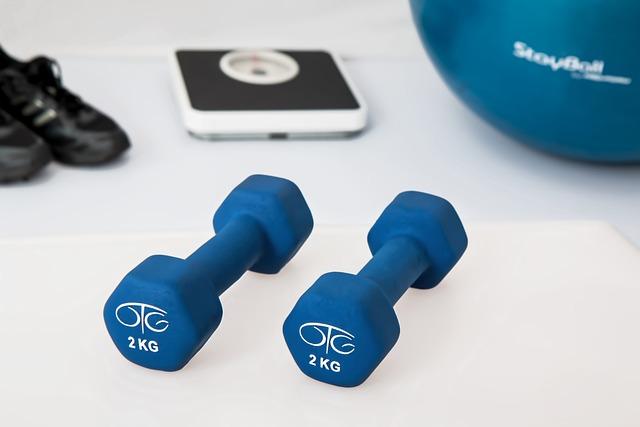Achieving optimal weight loss is not just about cutting calories or following the latest diet trend; it’s about understanding and balancing the key macronutrients—carbohydrates, proteins, and fats—that fuel your body. Each of these nutrients plays a crucial role in your overall health and weight management, and striking the right balance can lead to sustainable and effective weight loss. This article will guide you through the science and strategies behind macronutrient balance, offering practical advice and evidence-based tips to help you tailor your diet to your unique needs. With confidence and clarity, we will explore how to harmonize these vital components in your daily meals, ensuring you not only shed unwanted pounds but also maintain energy, support muscle health, and promote overall well-being.
Understanding Macronutrient Roles in Weight Loss
Balancing your intake of carbohydrates, proteins, and fats is essential for effective weight loss, as each macronutrient plays a distinct role in the body’s metabolism and energy management. Carbohydrates serve as the body’s primary energy source, but it’s crucial to choose complex carbs like whole grains and vegetables over refined sugars to maintain stable blood sugar levels. Proteins are the building blocks of muscle, and increasing protein intake can enhance metabolism and reduce appetite by promoting satiety. Fats, often misunderstood, are vital for hormone production and nutrient absorption. Opt for healthy fats such as avocados, nuts, and olive oil to support your weight loss journey.
- Carbohydrates: Focus on fiber-rich options to keep you full longer.
- Proteins: Incorporate lean sources like chicken, fish, and legumes.
- Fats: Include sources of omega-3 and omega-6 fatty acids for heart health.
Strategizing Your Daily Macronutrient Intake
Understanding the role of each macronutrient in your diet is crucial for effective weight loss. To achieve a balanced intake, focus on consuming the right proportions of carbohydrates, proteins, and fats. Start by calculating your daily caloric needs and then allocate them as follows:
- Carbohydrates: Aim for 45-65% of your daily calories. Opt for complex carbs like whole grains, legumes, and vegetables to maintain energy levels and promote satiety.
- Proteins: Allocate 15-25% of your daily calories. Incorporate lean protein sources such as chicken, fish, tofu, and beans to support muscle growth and repair.
- Fats: Keep it to 20-35% of your daily calories. Choose healthy fats from avocados, nuts, seeds, and olive oil to support hormone function and nutrient absorption.
Customize your macronutrient distribution based on your specific goals and lifestyle. For instance, those engaging in intense workouts might benefit from higher protein intake, while individuals with lower activity levels might prefer a reduced carb plan. Remember, consistency is key, so adjust gradually and monitor your body’s response to find the sweet spot that aligns with your weight loss journey.
Incorporating Balanced Meals for Sustained Energy
To achieve sustained energy and support optimal weight loss, it’s crucial to strike the right balance between carbohydrates, proteins, and fats. Carbohydrates are your body’s primary source of energy, but choosing the right kind is key. Opt for complex carbohydrates like whole grains, vegetables, and legumes, which release energy slowly, keeping you satiated for longer. Proteins are essential for muscle repair and growth. Include lean sources such as chicken, fish, beans, and tofu to maintain muscle mass and boost metabolism. fats should not be overlooked, as they are vital for nutrient absorption and hormone production. Focus on healthy fats from sources like avocados, nuts, seeds, and olive oil to keep your body functioning optimally.
- Choose complex carbs: Whole grains, vegetables, legumes
- Incorporate lean proteins: Chicken, fish, beans, tofu
- Include healthy fats: Avocados, nuts, seeds, olive oil
Integrating these elements into each meal ensures that your body receives a steady stream of energy, reducing cravings and supporting weight management. By mindfully combining these macronutrients, you’ll not only enhance your energy levels but also facilitate a more effective and sustainable weight loss journey.
Monitoring and Adjusting for Personal Goals
Achieving optimal weight loss requires not just setting goals but continuously monitoring and adjusting your approach to macronutrient intake. Start by keeping a detailed food diary to track your daily consumption of carbohydrates, proteins, and fats. This will help you identify patterns and make necessary adjustments. Consider using apps or tools that provide a breakdown of your macronutrient ratios, ensuring they align with your personal goals.
- Carbohydrates: Focus on complex carbs like whole grains, vegetables, and legumes. These provide sustained energy and prevent spikes in blood sugar levels.
- Proteins: Aim for lean sources such as chicken, fish, tofu, and legumes. Proteins are crucial for muscle repair and growth, especially when engaging in regular exercise.
- Fats: Include healthy fats from sources like avocados, nuts, and olive oil. They are essential for nutrient absorption and hormone regulation.
Periodically reassess your progress and adjust your macronutrient balance as needed. Remember, the key to success is flexibility and responsiveness to your body’s changing needs.
